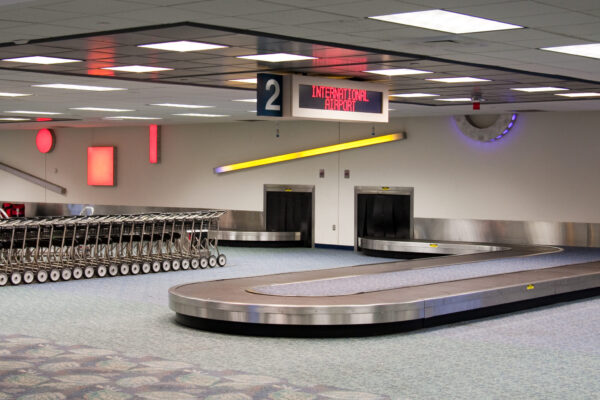Over the Thanksgiving Holiday I sat down and reflected on all the little (and big) digital tools that I use each and every day that have made my life so much easier. As I started counting, I realized that many of them are apps on my phone and quite a few of them are decidedly not “main stream”. So you may not have heard of them. I decided to make a list of the Top 5.
#5
Waze. Many people use Google Maps or Apple Maps and I do as well. Some people even know that Google bought Waze many years ago. But not everyone realizes the big difference between Waze’s truly crowd-sourced algorithms versus what all the other Maps programs offer. While Google and Apple Maps incorporate traffic updates based on traffic camera and sensor information, Waze relies on community-driven GPS information that comes from other people’s phones moving (or not moving) in real-time traffic. Thousands of phones and sometimes tens of thousands of phones directly on your route. This is what makes Waze’s turn-by-turn directions so much more reliable when you are driving in congested cities. I can’t tell you how many times I have been in the back of a New York City taxi or Uber and the route suggested by Waze shaved off 15 or 20 minutes from what Google Maps projected. The same has held true for me in Kuala Lumpur (where everyone seems to use the app) and in Berlin. If you are not yet using Waze, I encourage you to give it a try.
#4
ToDo Cloud. There are many, many apps that promise to capture items on your to do list and bring them to your attention when you might be in a position to complete them. Some have catchy names (“Remember the Milk” is a popular app), some don’t (“Things” is another). But I have yet to find one that works as well for me as ToDo Cloud. There are many useful features but one that is particularly worth highlighting is the ability to “geotag” items on your to do list. As such a reminder to buy picture-hanging nails will pop up on your phone as you drive near the hardware store. Or a reminder to reach out to a friend in Atlanta will come on screen as you touch down at the airport. I use this feature a lot and I love it. The app is super-easy to set up and of course it syncs across all of your devices, including laptop or desktop.
#3
Evernote. This software became my virtual filing cabinet several years ago. I scan documents into it using my phone or iPad. I file stuff that I may need again in the future. And, at any time, whether I am in Jakarta on business or whether I am taking a walk in New York’s Central Park, I am able to retrieve it instantly. It really works. So many times, my wife has turned to me and said, “do you happen to have a copy of…” and I am able to pull it up on my phone right away. For example, I have a folder for important documents. In it are scanned copies of my passport, driver’s license, birth certificate, automobile registration, social security card, and even our marriage certificate. I also have folders with restaurant recommendations for different cities and great historical quotations that I like to re-read from time to time. All of this information is stored securely in the system, and yet I can securely access it at a moment’s notice from anywhere in the world.
#2
Audible. I don’t know what I would do without Audible. But I certainly wouldn’t get nearly as much “reading” done. Of course there are other ways to listen to audio content from your phone, but I have found Audible to work best for me. Pretty much any new book that comes out is on Audible from day one, and I am able to download it and listen while exercising, while waiting in a security line, or while sitting on a plane. I have found the average book to be about 8 hours long and it is not difficult for me to get through that in a typical week. If it were not for Audible, then the books that I want to read would just be weighing down my briefcase while traveling or would be piling up on my night stand. Oftentimes I am in conversation with a client or a colleague and we talk about a recent biography that has been in the news. When I say that I just finished it, I often get the question “when did you have time to read that?” Well, I didn’t technically “read” it but I listened to it during all those time pockets throughout the week when it would be difficult (or require too much energy) to do something else. An added side benefit for me is that being read to from a book reminds me of my grandmother in Cologne who used to read to me as a child. I often fell asleep to her reading to me and it relaxes me to this day. If you haven’t tried it or have pre-conceived notions about having to actually read a book to absorb the content, give it a shot. Many times you even have the author reading the book which can make it an extra special experience.
And the Winner is…#1
Flightradar24. Okay, so before I sat down to write this article it was crystal clear to me that this app would be the winner. I think I may use it more than any other. Of course that has to do with the fact that I fly several times a week and often internationally. I depend on accurate, up-to-the-minute flight information so I can join important board conference calls and meetings with clients. Flightradar24 allows you to track actual plane movement globally. So while the airline may tell you that your flight is on time, I can tell that the inbound aircraft has in fact left the gate but is still taxiing on the runway in Atlanta and there is no way my flight will be on time. Rather than relying on information the airline decides to divulge to passengers, this app relies on data actually transmitted live by a plane’s ADS-B transponder. It was originally developed by a Swedish aviation hobbyist and it quickly spread around the world within the aviation community. It is truly amazing. The data is basically crowdsourced by volunteers with ADS-B receivers around the globe. What that means is that I can tell you at any given time that the daily nonstop from Singapore to Newark is currently cruising at 41,000 feet over northern Canada with a ground speed of 540 knots. The expected arrival time is calculated down to the minute and most of the time it is more accurate than what the airline has. Not only do I use this critical information for flights that I am on but also for flights my wife or my clients are on. In addition, the app also shows you literally every single aircraft that may be flying between two cities, including cargo flights and corporate jets. Some of you may remember the old “Official Aviation Guide” (OAG) that goes back to 1929. It used to be the only source for this type of information. Now I just use Flightradar24 and it has made my life so much easier.
In closing, while I have invested in a number of start-ups and software companies over the years, I do not have any ownership stake or affiliation with any of the companies that have made these apps available to all of us. I have used each of these tools for years and they have earned my endorsement the hard way. Of course, I love learning from all of you in my global network, so please do share your favorite digital tools and even your “Top Five” in comments here. Thank you!





